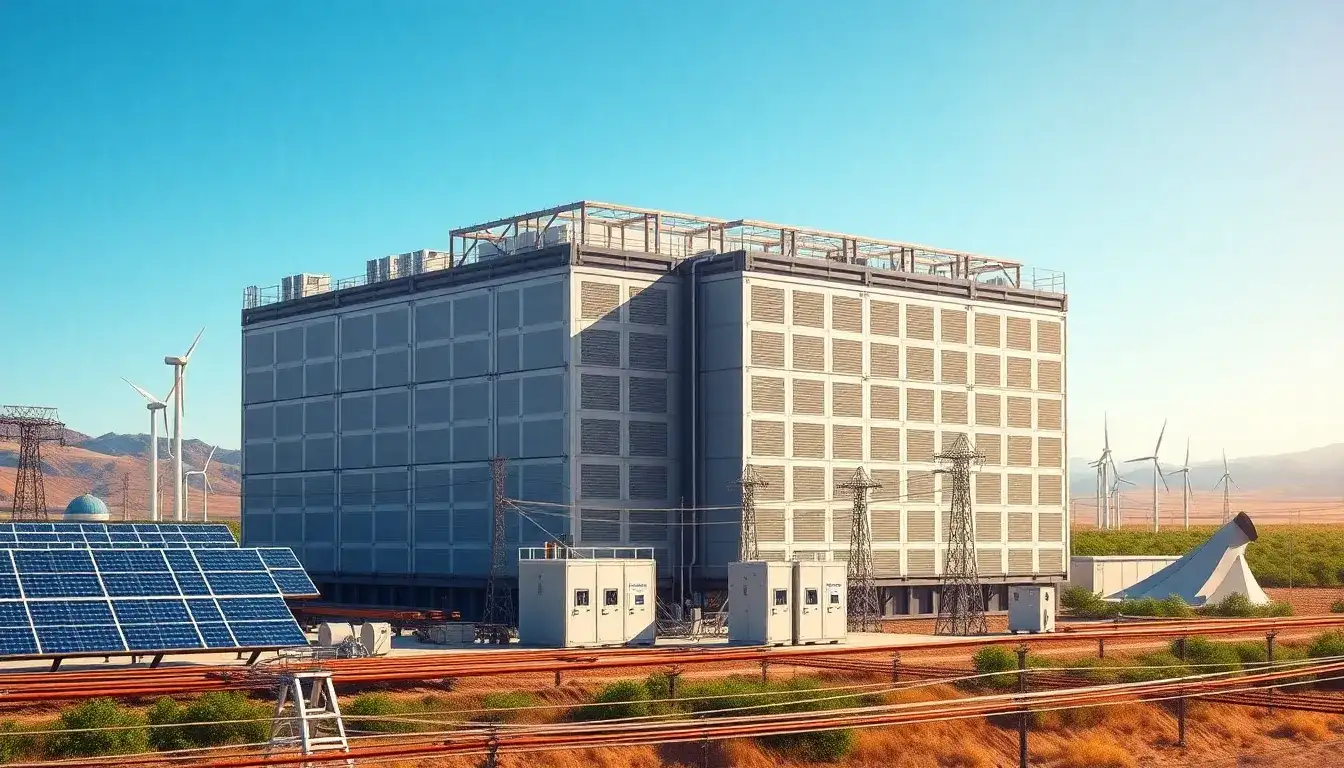
The U.S. development branch of Spain’s Ignis has submitted an application to the California Energy Commission (CEC) to construct a 362MWh battery energy storage system (BESS) in Alameda County. The application, filed on February 14, 2025, was prepared by consultancy firm Jacobs on behalf of Ignis and falls under the CEC’s Opt-In Certification Programme.
This application comes after months of litigation in New York’s Supreme Court involving Ignis and its former development partner, Salka Energy, with both parties making accusations of contractual breaches against each other.
Overview of the Viracocha Hill Project
The proposed project, known as Viracocha Hill, features a 90.7MW/362MWh BESS located near Ignis’ upcoming Sand Hill Wind Repower project in the eastern Altamont Pass area of Alameda County. The project will utilize 108 Tesla Megapack 2XL units, with plans to increase this number to 144 by the project’s end of life to ensure capacity sustainability. Although the application specifies the use of a particular provider and product, this is not fixed and may be subject to change.
Additionally, Ignis has secured a California Independent System Operator (CAISO) interconnection agreement for the project, which will connect to the grid through Pacific Gas & Electric’s (PG&E) Kelso-Tesla 230kV tap (queue number 1461). Ignis aims to begin construction by the second quarter of 2026 and anticipates commercial operations to commence in the third quarter of 2027.
Background on the Legal Dispute
The Viracocha Hill project is a combination of two previously defunct wind farm projects that Salka acquired from Clearway Energy and sPower (now part of AES Clean Energy) in 2021 and 2022, respectively. Following the acquisition from Clearway, Salka sold the development rights to Ignis and entered into a development services agreement (DSA) with them. Under the DSA, Salka was to provide development services for a monthly fee and an ultimate payment based on project profitability, while Ignis would finance the project’s development.
After acquiring the sPower project, Salka again sold the development to Ignis, leading to an amendment of the DSA to incorporate this second project. A protective clause was included in the DSA, allowing Salka to reacquire the developments if Ignis breached any part of the agreement.
According to Salka’s May 16, 2024 complaint, the DSA was amended a second time in the third quarter of 2022 to include the addition of the BESS, which was deemed crucial for the project’s profitability. This led to an increase in Salka’s monthly fee and the overall development budget provided by Ignis. Moreover, the DSA stipulated that Ignis must reach an agreement with Salka before proceeding with the BESS development to avoid jeopardizing the project’s success.
Despite efforts to resolve the issues, tensions between the two companies escalated, culminating in Salka paying contractors on behalf of Ignis without timely reimbursement. Ignis also entered into a power purchase agreement (PPA) for the BESS phase with California community choice aggregator Ava Community Energy in February 2024, which Salka claimed was done without their knowledge or consent, constituting a breach of the DSA.
Subsequent Legal Actions
In response to Salka’s complaint, Ignis filed its own lawsuit against Salka for damages, alleging breaches of the DSA, gross negligence, and unfair competition. Ignis reported investing $16 million into the project and financing bonds of nearly $9 million without receiving any return. Ignis’s motion to dismiss acknowledged much of Salka’s account but argued that the BESS phase was not covered by the reacquisition clause and that the DSA had been effectively terminated.
Following the legal disputes, both parties filed temporary injunctions against each other. The court mandated that each company continue fulfilling its obligations under the DSA, with a court date set for November 18, 2024, to present evidence. Ultimately, on October 20, 2024, it was reported that both parties had reached a settlement agreement to resolve their disputes.
Regulatory Context
At this time, the CEC’s jurisdiction over BESS projects exceeding 200MWh is under scrutiny, particularly following a recent fire incident at Moss Landing. A new bill, AB 303, known as the “Battery Energy Safety & Accountability Act,” has been introduced to remove the CEC’s regulatory authority over such projects, necessitating approval from local regulatory bodies instead. Should this bill pass, it would require the CEC to deny all projects currently under its review.
Upcoming Events
As the energy sector evolves, various events, such as the Energy Storage Summit Australia 2025 and Energy Storage Summit USA 2025, are scheduled to facilitate discussions on investment opportunities and developments in the energy storage market.
Original article by NenPower, If reposted, please credit the source: https://nenpower.com/blog/ignis-files-application-for-362mwh-battery-storage-project-in-california-following-legal-settlement/


